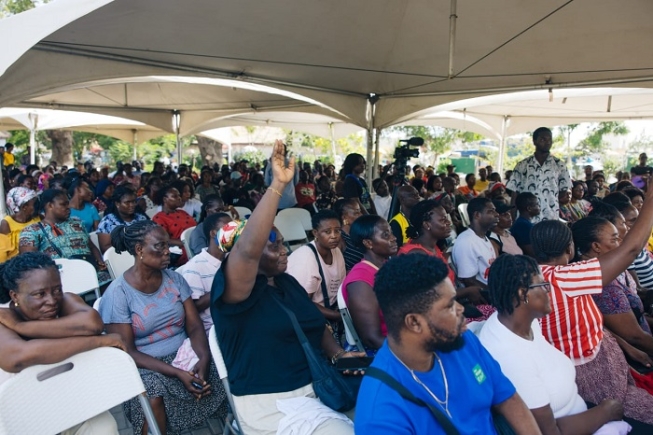Every stall in Kantamanto Market will soon be connected to safe, legally installed electricity, as part of a market-wide plan aimed at reducing fire risks and improving working conditions for thousands of traders.
The announcement was made during a town hall meeting held on Tuesday, April 15 2025, at the forecourt of the Accra Metropolitan Assembly (AMA), where the co-founder of The Or Foundation, Branson Skinner, said the electrical installation would be fully funded by the charity as part of its ongoing fire relief support.
“We are committed to ensuring that the rebuilding of Kantamanto Market is not only about physical restoration but also about creating a safer, more sustainable environment for all of its traders. This electrification project is just one of the ways we are supporting the market’s recovery,” Skinner said.
He explained that the foundation is working with key partners, including the AMA, the Ghana Police Service, Kantamanto Market leadership, and SheGuards, a private security firm, to set up a professional emergency response and security team to boost safety.
Given that most traders in the market are women, he added, the personnel would be trained in gender-based violence prevention, fire-fighting, and first aid. To strengthen fire prevention, 1,000 fire extinguishers are also being installed throughout the market.
Liz Ricketts, co-founder of The Or Foundation, said the team’s top priority was to ensure that all electricity connections in the market are properly and legally done.
“We want to make sure, first and foremost, that the electricity in the market is safe and legally installed,” Ricketts said. “Equal access to electricity is essential for vendors who rely on it for fans, phone charging, and other daily operations.”
Ricketts also noted that the foundation’s original focus on education had shifted toward improving market conditions due to the declining quality of secondhand clothing and rising operational costs.
She described Kantamanto Market as “a model of circular economy, and a place where upcycling and reusing were at the heart of what people do.”
Samuel Owusu-Sekyere, Director of Operations, said over GH¢22.5 million had been disbursed to more than 9,000 traders via mobile money, and GH¢3 million had been invested in lumber for rebuilding shops.
He stressed that the group was not acquiring land but working to improve infrastructure with full collaboration from public agencies.
“Kantamanto is government land, and no NGO can buy it. Our focus is on improving the working environment and collaborating with stakeholders,” he said.
He added that the group was working closely with the AMA, the Electricity Company of Ghana, the fire service, and market leaders “to ensure that Kantamanto becomes a place where people can trade safely and contribute to Ghana’s economy.”
Director of Works at AMA, Samuel Mantey, confirmed that all the foundation’s activities were backed by a memorandum of understanding with the Assembly and had full institutional support.
He urged traders to support one another and remain vigilant about safety and security in the market.
“The AMA will also deploy security personnel to enhance safety,” Mantey added.
Market Manager Atta Manu noted that the scale of the electrification project would require careful technical planning.
“We need to engage technicians to map out the entire system,” he said. “Once the work begins, any substandard wiring will be replaced to prevent future fire hazards.”

